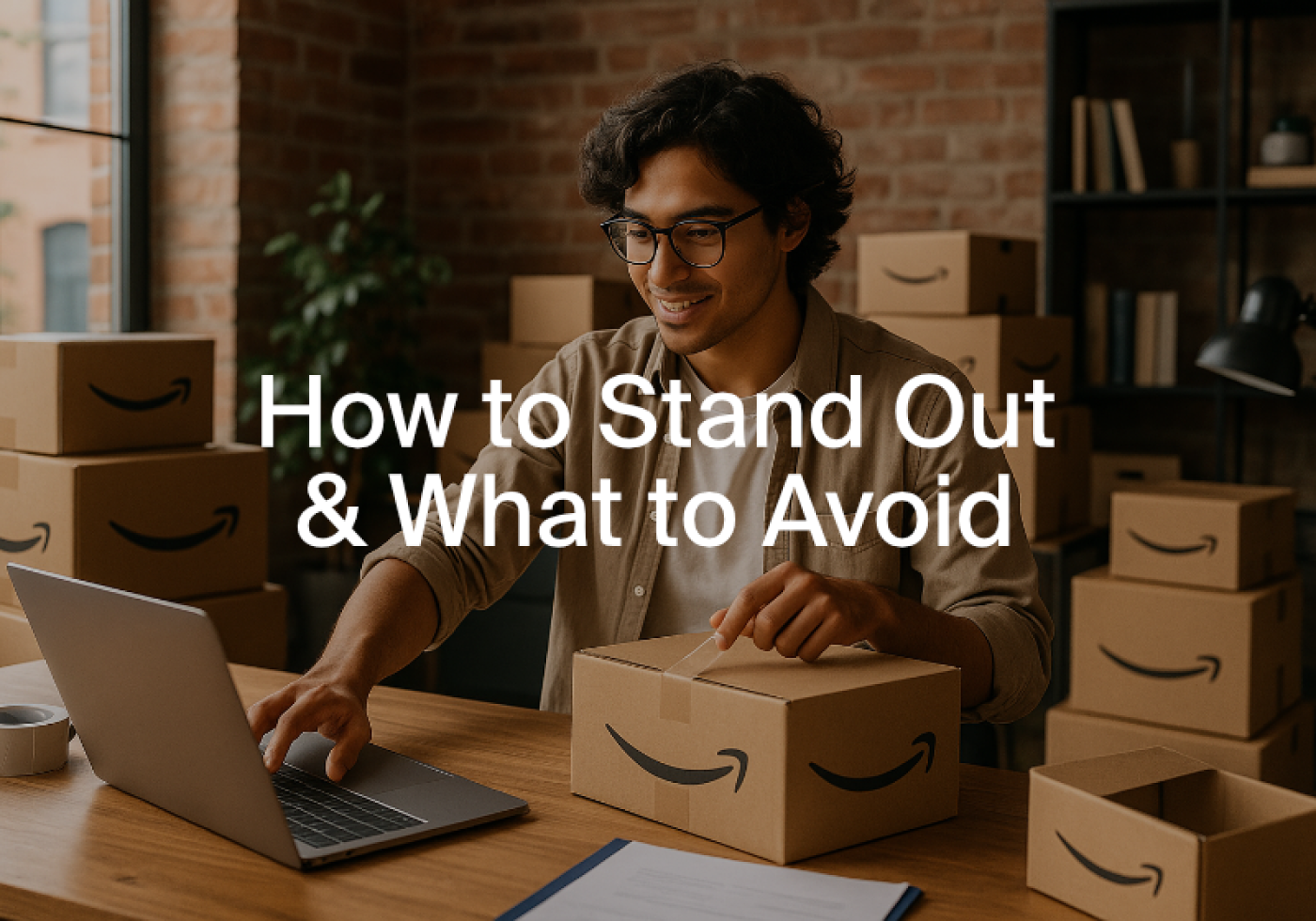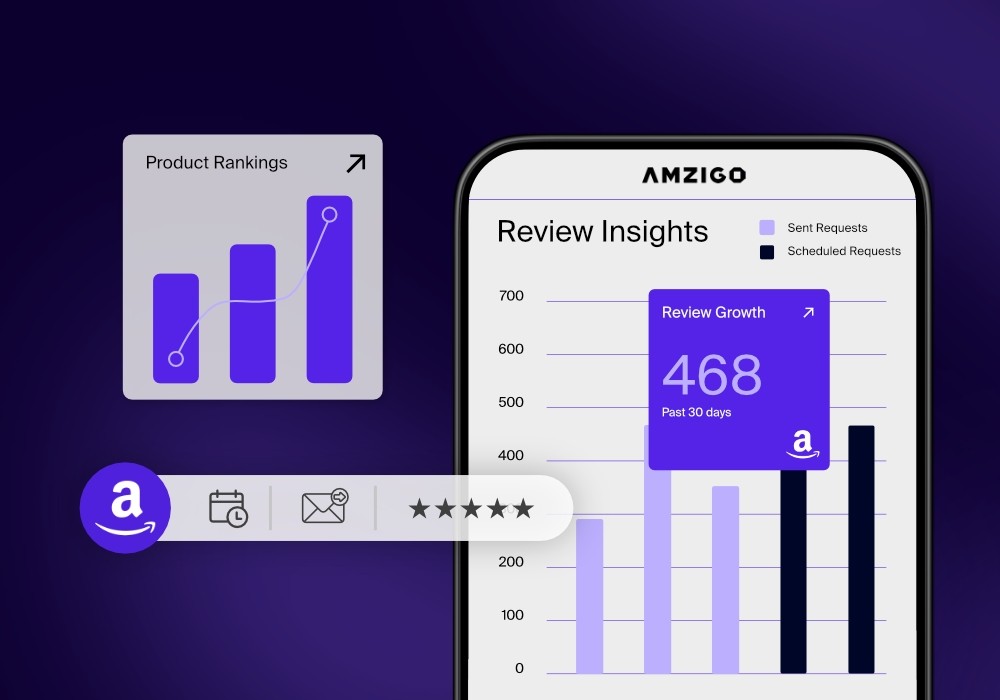Starting a business on Amazon can be one of the most rewarding moves for aspiring entrepreneurs — but it's rarely as simple as listing a product and waiting for sales.
New and small sellers face unique challenges: limited budgets, lack of brand visibility, and a steep learning curve. This guide is a practical reflection of what it really takes to get started on Amazon, with best practices to follow, realistic ways to stand out, and common pitfalls to avoid.
What it’s really like starting out on Amazon
New Amazon sellers often enter the marketplace full of ambition, but the reality can be humbling. The platform is competitive, customer expectations are high, and Amazon’s rules are strict. It's not uncommon for small sellers to feel overwhelmed — especially when juggling product sourcing, listing creation, customer service, and marketing with limited resources.
However, Amazon also offers an immense opportunity. With the right setup, processes, and mindset, small sellers can build profitable, sustainable businesses. Success isn’t based on luck — it’s built on solid fundamentals.
Best practices for new and small Amazon sellers
Focus on one product first
Rather than launching a full catalogue, start with a single, well-researched product. This allows you to focus your efforts, perfect your listing, and build initial traction without spreading yourself too thin. A successful first product builds confidence and funds for future growth.
Optimise your product listing
Every detail counts. Your title should be keyword-rich but clear, your bullet points should communicate value, and your description should answer real customer questions. High-quality images (including lifestyle and close-up shots) are essential — they create trust before a customer reads a word.
Get reviews the right way
Without reviews, conversion rates suffer. Use Amazon’s built-in 'Request a Review' feature to follow up with buyers compliantly. Tools like Amzigo can automate this process. Avoid anything that violates Amazon’s communication policies — even well-meaning thank-you notes with incentives can lead to account warnings.
Keep stock under control
Running out of stock can tank your momentum and organic ranking. Start small, but monitor your inventory closely. If you're using FBA, send replenishment shipments before you dip below 30 days of estimated coverage. Small sellers often lose sales simply by not restocking in time.
Respond to customers quickly
Even with just a few orders a day, customer questions and issues must be handled professionally. A late or dismissive reply can lead to negative feedback or lost sales. Setting a routine for daily check-ins on your Seller Central messages makes a big difference.
Invest in advertising — carefully
Start with low-budget campaigns using Amazon Sponsored Products. Focus only on your main product at first and monitor your spend and conversion rates closely. Advertising isn’t a fix-all, but it can help new sellers gain initial visibility.
How small sellers can stand out
Build your brand identity
Even if you're only selling one item, act like a brand. Use consistent colours and tone across your images, packaging (if applicable), and product copy. Enrol in Brand Registry when eligible to unlock enhanced content and protection.
Use lifestyle imagery and video
Images showing your product in use — not just on a white background — help customers visualise the benefit. If possible, add a short product demo video. These assets build credibility fast, especially if you're competing with generic or factory-sourced listings.
Tell your story
In your brand content or Storefront, include a short paragraph about why you started the business. Many shoppers appreciate knowing there’s a real person behind the brand, especially when choosing between similar products.
Focus on a niche
Trying to appeal to everyone usually means you appeal to no one. It’s more effective to go deep into one category (like fitness, pet accessories, or kitchen tools) than to spread across unrelated products. It helps with targeting, branding, and repeat sales.
What to avoid as a small Amazon seller
Avoid low-quality or untested products
If your product doesn’t perform well or meet expectations, reviews will reflect it. Don’t rely on manufacturer claims alone — test your own samples thoroughly. Quality issues are one of the quickest ways to damage a new account.
Don’t ignore the rules
Amazon has strict policies, especially around customer communication, product authenticity, and listing accuracy. One small mistake — like using misleading images or sending review-incentivising inserts — can lead to suspension or removal of your listing.
Don’t rely solely on organic traffic
In the early days, your product won’t rank high organically. You’ll need to drive traffic through advertising, promotions, or external marketing to gain traction. A “build it and they will come” mindset rarely works.
Don’t scale too quickly
Once sales start coming in, it’s tempting to expand into more products right away. But scaling too fast without understanding your margins, ad spend, and inventory needs can lead to cash flow issues and stockouts. Grow gradually and sustainably.
Conclusion
Selling on Amazon as a new or small business can be both exciting and daunting. While competition is intense, small sellers have the advantage of agility, authenticity, and focus. By starting smart, staying compliant, and focusing on quality and branding, even a solo seller can compete alongside the big names.
Success takes time — but with the right habits, tools, and expectations, it’s absolutely achievable.
Looking to take your Amazon business to the next level?
Discover how Amzigo's advanced features, like our Automated Review Centre, Product Analysis, and Inventory Management, can transform your selling experience. Check out our features and try it for free!



